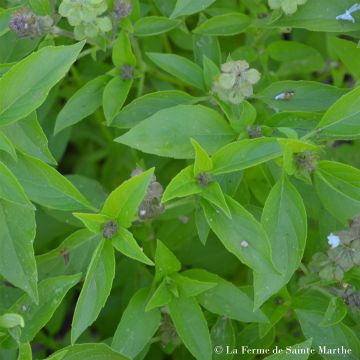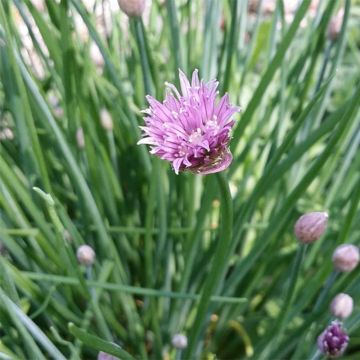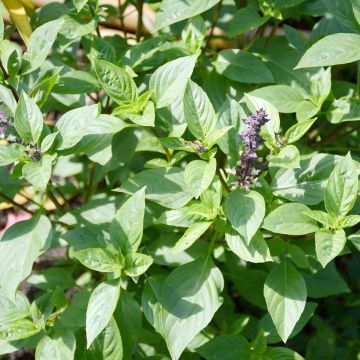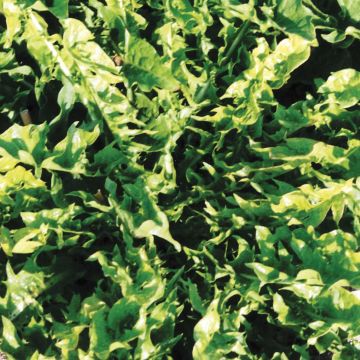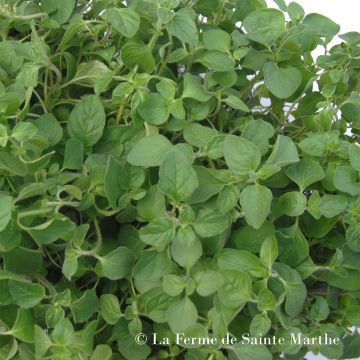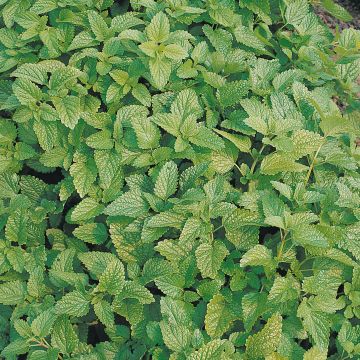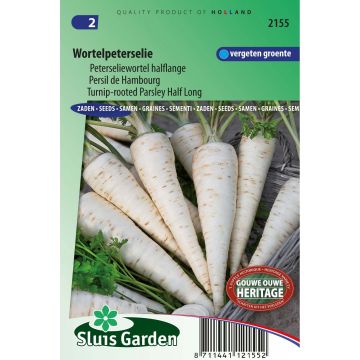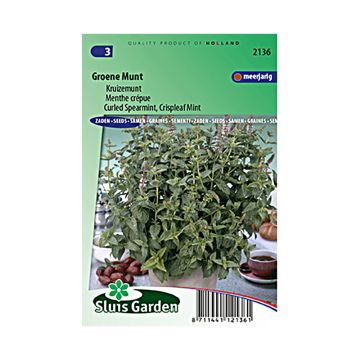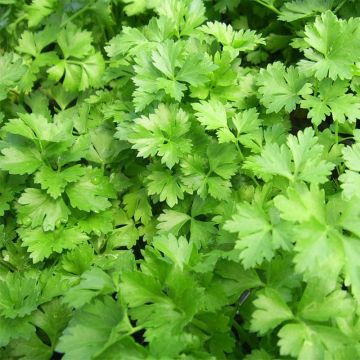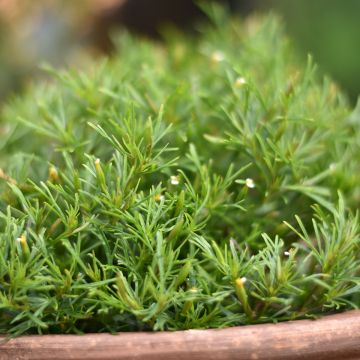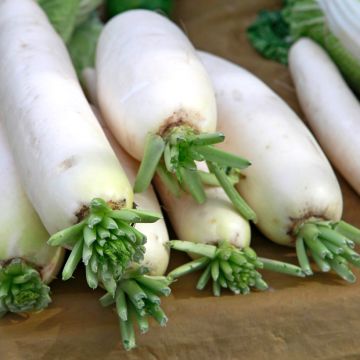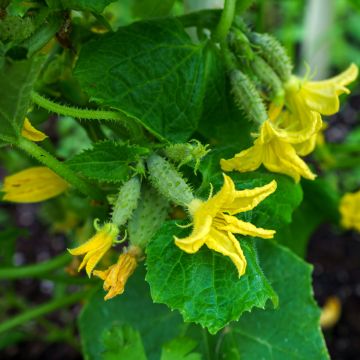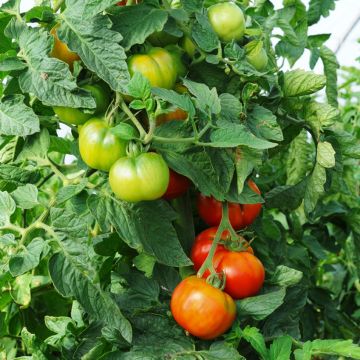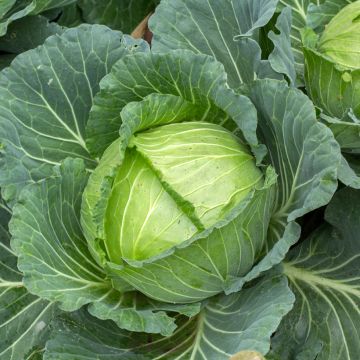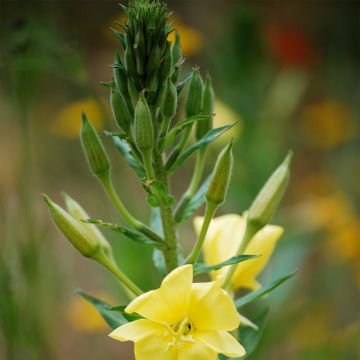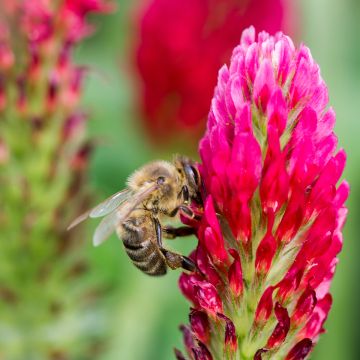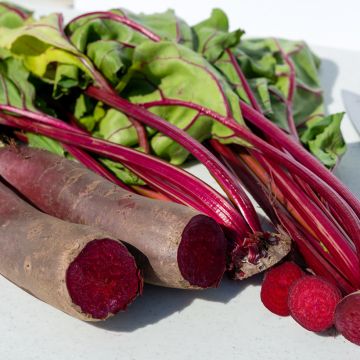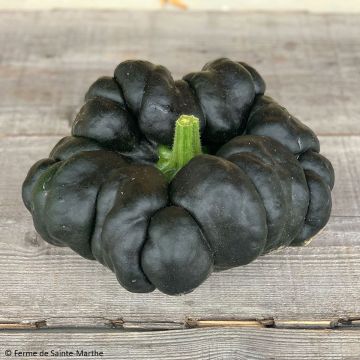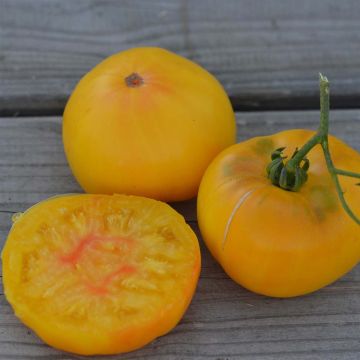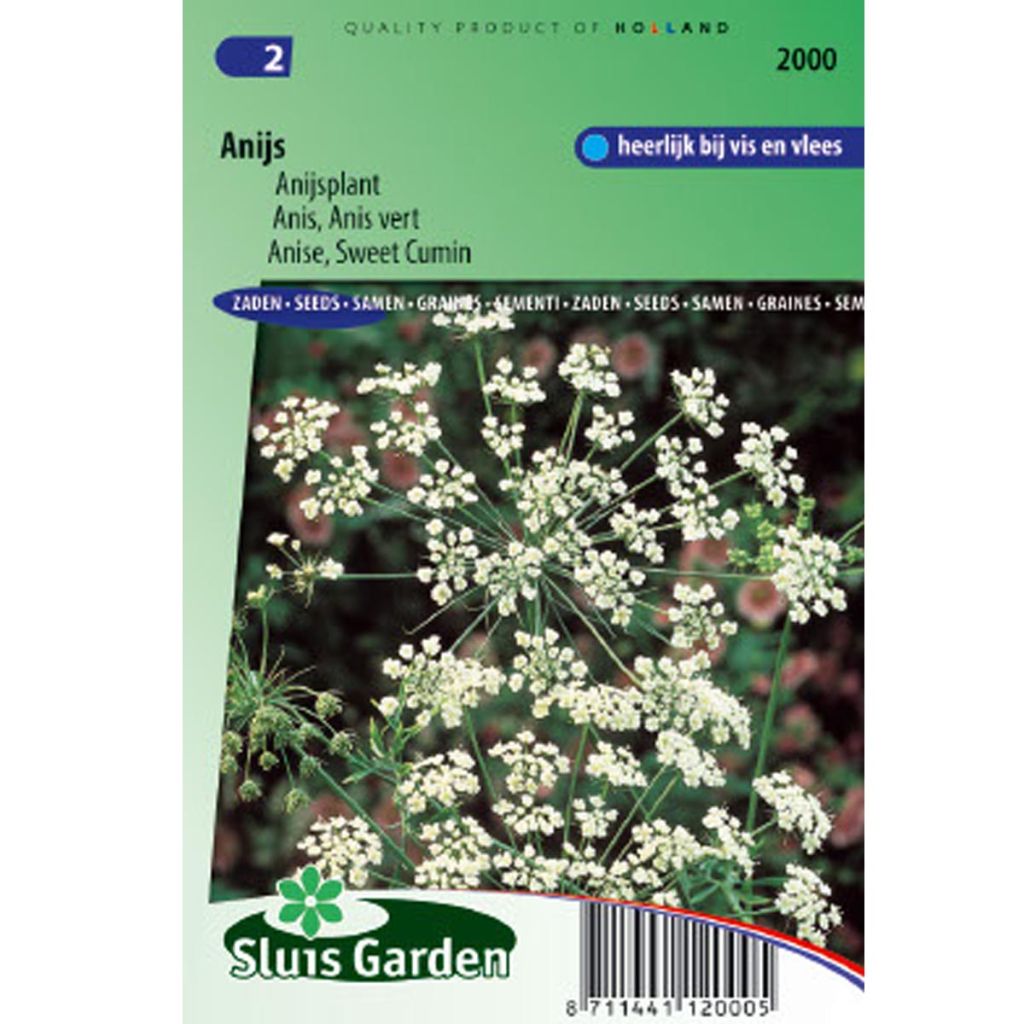

Green Anise
Green Anise
Pimpinella anisum
Aniseed, Anise, Sweet Cumin
This item cannot be shipped to the selected country
Dispatch by letter from €3.90
More information
Schedule delivery date,
and select date in basket
This plant carries a 6 months recovery warranty
More information
We guarantee the quality of our plants for a full growing cycle, and will replace at our expense any plant that fails to recover under normal climatic and planting conditions.
Seed-only orders are dispatched by sealed envelope. The delivery charge for seed-only orders is €3.90.
Description
Anise or Pimpinella anisum, also known as Green Anise, Cultivated Anise or Musk Anise, is an annual herbaceous plant. It is grown as a condiment plant for its highly aromatic leaves and seeds, which enhance and flavour salads, sauces, and slow-cooked dishes.
This plant, which measures between 40 and 80 cm (16 and 32in) in height, has an upright habit with hollow and hairy stems. The leaves have various shapes, with heart-shaped ones at the base and deeply divided ones higher up.
The flowers are small, white, and grouped in umbellules, which are in turn grouped in umbels. The fruits produced are grey-green, small, dry, and ovoid. They are slightly ribbed and pubescent like the stems.
This spice is widely used as fresh or dried leaves in salads, marinades or sauces for meat and fish, while the seeds are used to flavour jams.
Anise fruits contain molecules such as sesquiterpenes, phenolic acids, and an essential oil based on anethole. Its use helps to fight digestive disorders, acts as an antibacterial, expectorant, antispasmodic, and carminative stimulant, and when used externally, has antifungal properties.
Harvesting: during the harvest season pick the leaves as needed, and gather the seeds at the end of summer, beginning of autumn.
Storage: it is possible to store anise leaves and seeds after drying them in the shade and grinding them into powder, in airtight containers.
Gardener's tip: anise tolerates sunlight and heat and can be placed in sunny areas of the vegetable garden. If your soil is too compact, don't hesitate to amend it with sand, compost, and topsoil. It is a plant often used to repel aphids, caterpillars, and grubs.
Report an error about the product description
Harvest
Plant habit
Foliage
Botanical data
Pimpinella
anisum
Apiaceae
Aniseed, Anise, Sweet Cumin
Mediterranean
Annual
Other Herb seeds
Planting and care
Sowing and maintenance:
Green anise prefers fresh, loose and humus-rich soil. This plant also needs a sunny exposure to develop well. Green anise is sensitive to wind exposure as the plants tend to bend over.
Green anise is a plant that can be grown in the vegetable garden, but it also adapts well to borders, flowerbeds or pots.
Sowing: Sowing is done in spring, starting in February under cover or in a greenhouse, and from April in open ground until the beginning of summer. Sow the seeds in a well-spaced furrow that is about ten centimetres wide and two centimetres deep. The rows should be 25 centimetres (10 inches) apart. Cover the seeds with the soil that was pushed aside along the furrow, then water. Germination takes between 15 and 20 days. Once the first seedlings appear, thin them out to every 15 to 20 centimetres (6 to 8 inches). The more staggered the sowing, the longer the harvesting period will be.
Maintenance: Maintenance is low and only requires occasional watering (or preventive mulching) when the soil dries out. Lack of water (water stress) that can cause green anise to go to seed. When the plant starts to grow taller (from 50 centimetres (20 inches)), you can mound up soil around the base to help it stay upright.
Transplanting: You should space the plants about 20 centimetres (8 inches) apart in all directions.
Harvest the leaves as needed. The leaves that appear before flowering have the most flavour. It is best to consume them fresh. For the seeds, wait until they are completely dry and have turned brown, usually by the end of August.
Seedlings
Care
Intended location
-
, onOrder confirmed
Reply from on Promesse de fleurs
Vegetable seeds
Haven't found what you were looking for?
Hardiness is the lowest winter temperature a plant can endure without suffering serious damage or even dying. However, hardiness is affected by location (a sheltered area, such as a patio), protection (winter cover) and soil type (hardiness is improved by well-drained soil).

Photo Sharing Terms & Conditions
In order to encourage gardeners to interact and share their experiences, Promesse de fleurs offers various media enabling content to be uploaded onto its Site - in particular via the ‘Photo sharing’ module.
The User agrees to refrain from:
- Posting any content that is illegal, prejudicial, insulting, racist, inciteful to hatred, revisionist, contrary to public decency, that infringes on privacy or on the privacy rights of third parties, in particular the publicity rights of persons and goods, intellectual property rights, or the right to privacy.
- Submitting content on behalf of a third party;
- Impersonate the identity of a third party and/or publish any personal information about a third party;
In general, the User undertakes to refrain from any unethical behaviour.
All Content (in particular text, comments, files, images, photos, videos, creative works, etc.), which may be subject to property or intellectual property rights, image or other private rights, shall remain the property of the User, subject to the limited rights granted by the terms of the licence granted by Promesse de fleurs as stated below. Users are at liberty to publish or not to publish such Content on the Site, notably via the ‘Photo Sharing’ facility, and accept that this Content shall be made public and freely accessible, notably on the Internet.
Users further acknowledge, undertake to have ,and guarantee that they hold all necessary rights and permissions to publish such material on the Site, in particular with regard to the legislation in force pertaining to any privacy, property, intellectual property, image, or contractual rights, or rights of any other nature. By publishing such Content on the Site, Users acknowledge accepting full liability as publishers of the Content within the meaning of the law, and grant Promesse de fleurs, free of charge, an inclusive, worldwide licence for the said Content for the entire duration of its publication, including all reproduction, representation, up/downloading, displaying, performing, transmission, and storage rights.
Users also grant permission for their name to be linked to the Content and accept that this link may not always be made available.
By engaging in posting material, Users consent to their Content becoming automatically accessible on the Internet, in particular on other sites and/or blogs and/or web pages of the Promesse de fleurs site, including in particular social pages and the Promesse de fleurs catalogue.
Users may secure the removal of entrusted content free of charge by issuing a simple request via our contact form.
The flowering period indicated on our website applies to countries and regions located in USDA zone 8 (France, the United Kingdom, Ireland, the Netherlands, etc.)
It will vary according to where you live:
- In zones 9 to 10 (Italy, Spain, Greece, etc.), flowering will occur about 2 to 4 weeks earlier.
- In zones 6 to 7 (Germany, Poland, Slovenia, and lower mountainous regions), flowering will be delayed by 2 to 3 weeks.
- In zone 5 (Central Europe, Scandinavia), blooming will be delayed by 3 to 5 weeks.
In temperate climates, pruning of spring-flowering shrubs (forsythia, spireas, etc.) should be done just after flowering.
Pruning of summer-flowering shrubs (Indian Lilac, Perovskia, etc.) can be done in winter or spring.
In cold regions as well as with frost-sensitive plants, avoid pruning too early when severe frosts may still occur.
The planting period indicated on our website applies to countries and regions located in USDA zone 8 (France, United Kingdom, Ireland, Netherlands).
It will vary according to where you live:
- In Mediterranean zones (Marseille, Madrid, Milan, etc.), autumn and winter are the best planting periods.
- In continental zones (Strasbourg, Munich, Vienna, etc.), delay planting by 2 to 3 weeks in spring and bring it forward by 2 to 4 weeks in autumn.
- In mountainous regions (the Alps, Pyrenees, Carpathians, etc.), it is best to plant in late spring (May-June) or late summer (August-September).
The harvesting period indicated on our website applies to countries and regions in USDA zone 8 (France, England, Ireland, the Netherlands).
In colder areas (Scandinavia, Poland, Austria...) fruit and vegetable harvests are likely to be delayed by 3-4 weeks.
In warmer areas (Italy, Spain, Greece, etc.), harvesting will probably take place earlier, depending on weather conditions.
The sowing periods indicated on our website apply to countries and regions within USDA Zone 8 (France, UK, Ireland, Netherlands).
In colder areas (Scandinavia, Poland, Austria...), delay any outdoor sowing by 3-4 weeks, or sow under glass.
In warmer climes (Italy, Spain, Greece, etc.), bring outdoor sowing forward by a few weeks.

































